Menstrual Health : Education, Awareness, and Hygiene Practices
Menstrual Health : Education, Awareness, and Hygiene Practices
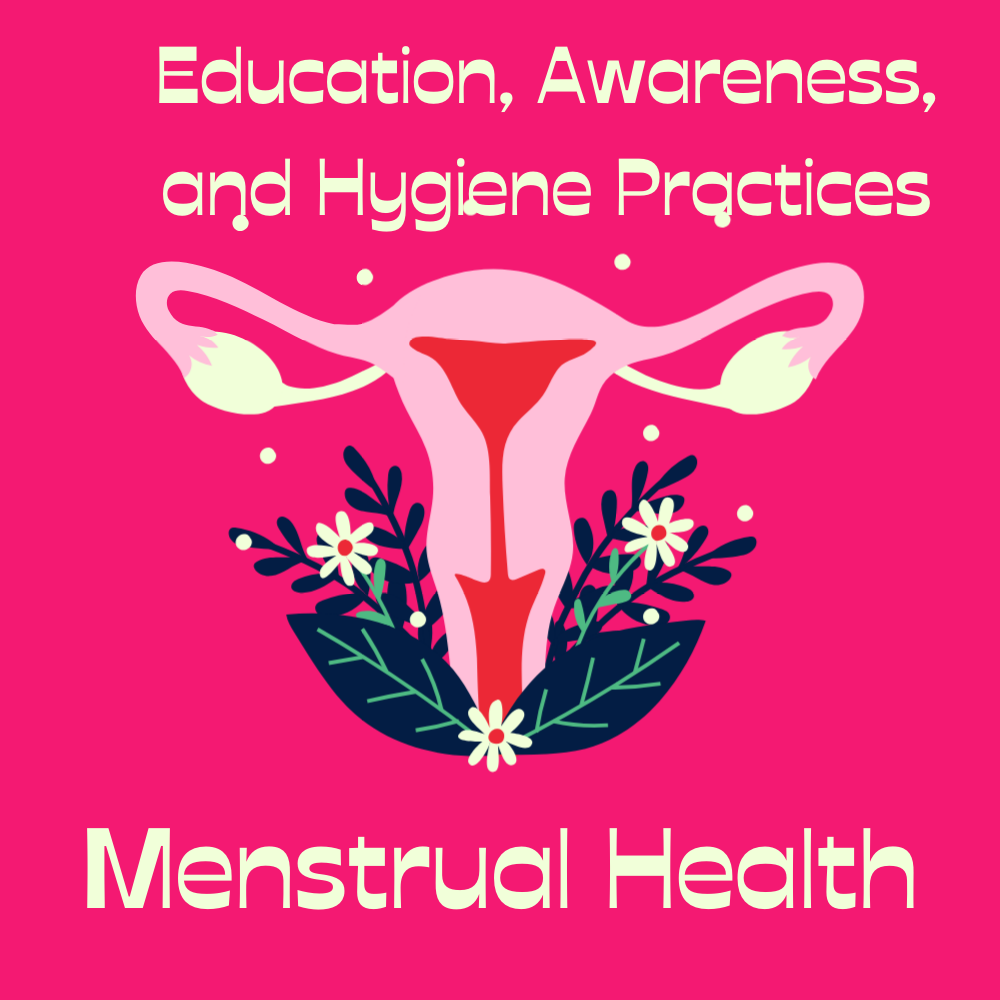
Menstrual health awareness is an essential aspect of women’s well-being, encompassing education, awareness, and hygiene practices. Despite advancements in various fields, menstrual health remains a topic often shrouded in stigma and misinformation. This comprehensive essay delves into the importance of menstrual health awareness, discussing its significance, challenges, and the role of education and hygiene practices in promoting overall menstrual well-being. Through a persuasive lens, the essay aims to shed light on the need for comprehensive menstrual health education and awareness initiatives, emphasizing the importance of destigmatizing menstruation and ensuring access to proper hygiene practices for women worldwide.
Introduction:
Menstruation is a natural biological process experienced by millions of women globally, yet it is often surrounded by silence, shame, and misunderstanding. Menstrual health awareness encompasses not only understanding the biological processes involved but also addressing the socio-cultural, economic, and environmental factors that impact women’s experiences. This essay explores the multifaceted dimensions of menstrual health awareness, emphasizing the need for education, awareness, and hygiene practices to promote women’s overall well-being.
Section 1: Understanding Menstrual Health, with a focus on both the biological aspects of menstruation and socio-cultural perspectives.
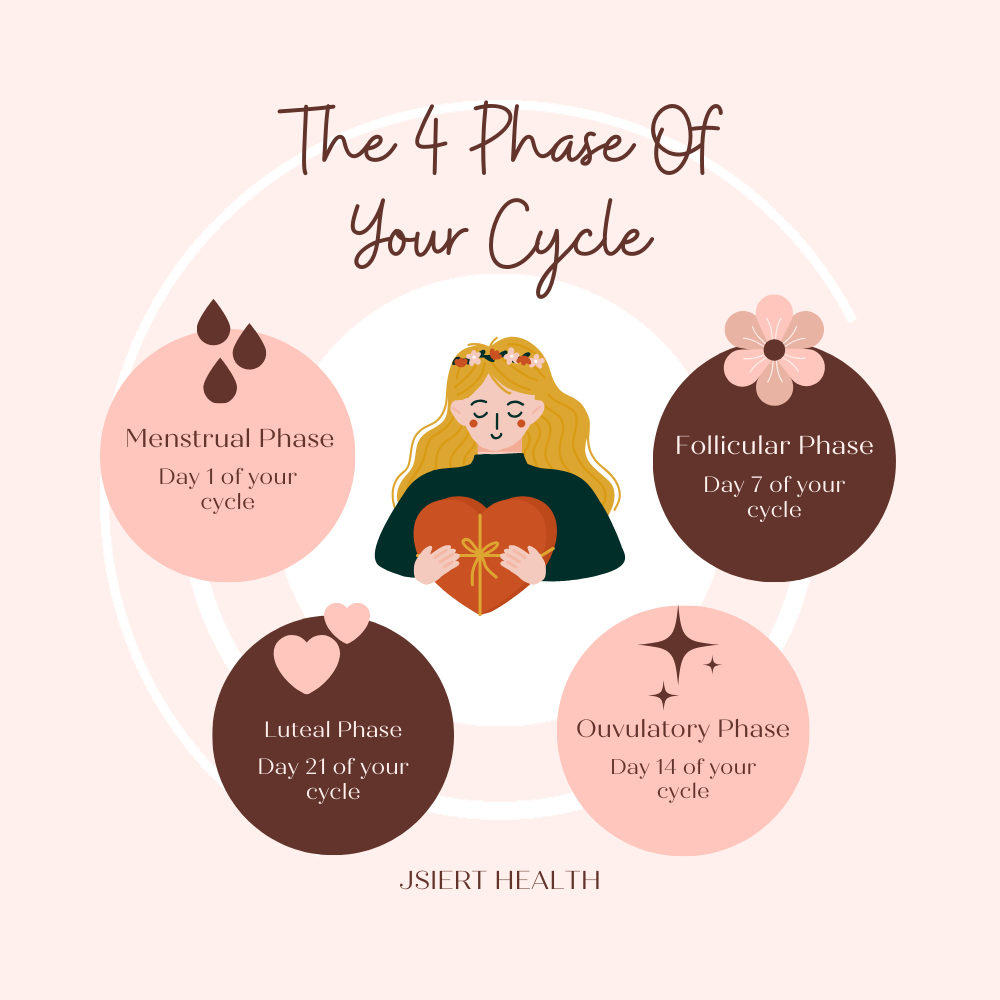
1.1 Biological Aspects of Menstruation
Overview of the Menstrual Cycle and Hormonal Changes:
The menstrual cycle is a complex biological process that typically lasts around 28 days, although variations are common. It involves a series of hormonal fluctuations and physiological changes primarily orchestrated by the hypothalamus, pituitary gland, ovaries, and uterus. The menstrual cycle can be divided into several phases:
- Menstrual Phase (Days 1-5): Menstruation begins on the first day of the cycle when the uterine lining sheds, resulting in vaginal bleeding. This phase marks the start of the menstrual cycle.
- Follicular Phase (Days 1-14): Following menstruation, the pituitary gland releases follicle-stimulating hormone (FSH), which stimulates the growth of ovarian follicles. One of these follicles matures into an egg, while estrogen levels rise, preparing the uterus for potential pregnancy.
- Ovulation (Around Day 14): Midway through the menstrual cycle, a surge in luteinizing hormone (LH) triggers the release of the mature egg from the ovary, known as ovulation. This is the most fertile phase of the menstrual cycle.
- Luteal Phase (Days 15-28): After ovulation, the ruptured follicle transforms into a structure called the corpus luteum, which secretes progesterone. This hormone prepares the uterine lining for implantation of a fertilized egg. If fertilization does not occur, hormone levels drop, leading to the onset of menstruation and the beginning of a new cycle.
Common Menstrual Disorders and Their Impact on Women’s Health:
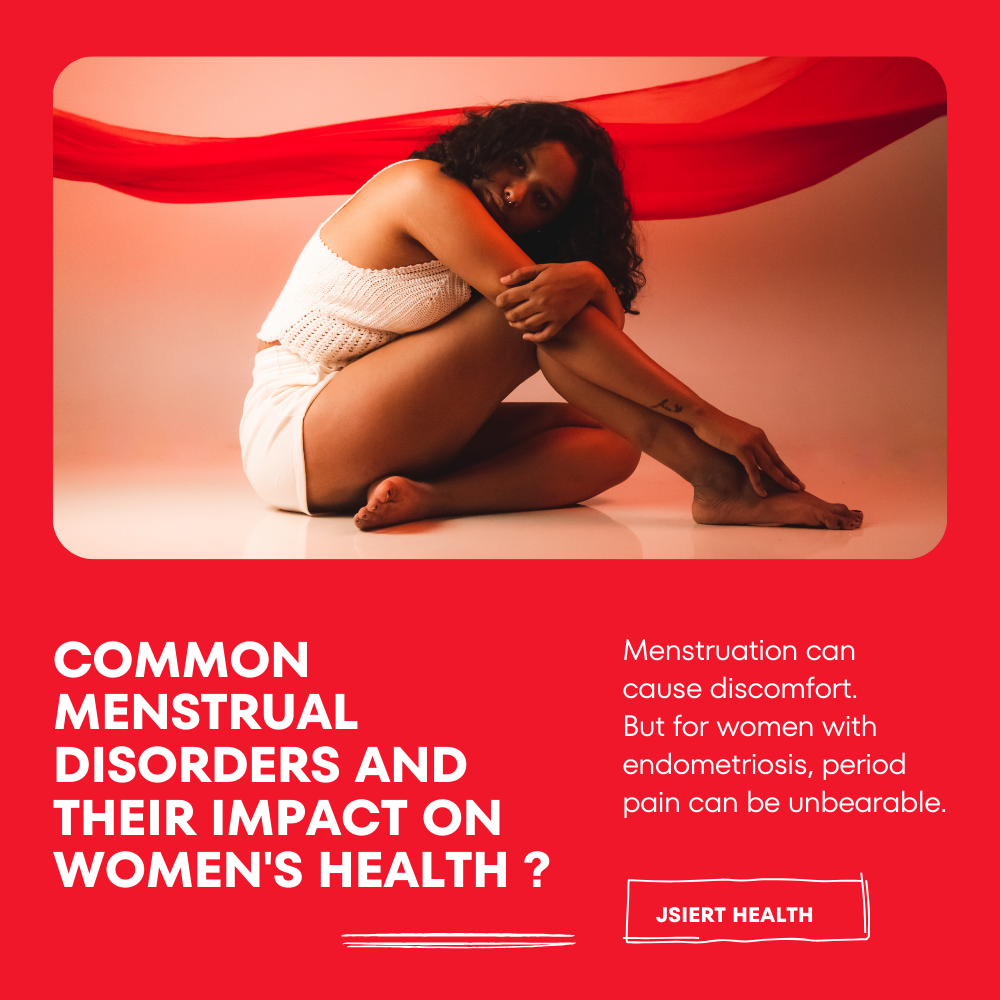
Despite being a natural process, menstruation can be accompanied by various disorders that affect women’s health and well-being. Some common menstrual disorders include:
- Dysmenorrhea: This refers to painful menstrual cramps, which can range from mild to severe and may interfere with daily activities.
- Menorrhagia: Characterized by heavy menstrual bleeding that lasts longer than seven days or requires changing sanitary products frequently.
- Premenstrual Syndrome (PMS): A combination of physical and emotional symptoms, such as bloating, mood swings, fatigue, and irritability, occurring in the days leading up to menstruation.
- Polycystic Ovary Syndrome (PCOS): A hormonal disorder characterized by irregular periods, excess androgen levels, and cysts on the ovaries, which can lead to fertility issues and other health complications.
Understanding these biological aspects and disorders associated with menstruation is crucial for promoting menstrual health and addressing related challenges faced by women.
1.2 Socio-cultural Perspectives on Menstruation
Historical Attitudes Towards Menstruation:
Throughout history, menstruation has been surrounded by myths, misconceptions, and cultural beliefs that vary widely across societies. In many ancient cultures, menstruation was viewed as a mystical or taboo phenomenon, often associated with notions of impurity or ritualistic practices.
- Ancient Practices: In some societies, menstruating women were secluded from communal activities or considered ritually unclean during their menstrual period. This led to practices such as menstrual huts or menstrual seclusion, where women were isolated from the rest of the community during menstruation.
- Religious Beliefs: In certain religious traditions, menstruation was perceived as a source of impurity or defilement, leading to restrictions on women’s participation in religious rituals or social activities during their menstrual period.
Stigma, Taboos, and Cultural Practices Surrounding Menstruation:
Even in modern times, stigma, taboos, and cultural practices surrounding menstruation persist in various parts of the world, contributing to shame, silence, and discrimination against menstruating individuals.
- Menstrual Stigma: The stigma surrounding menstruation can lead to feelings of shame, embarrassment, and low self-esteem among women and girls. This stigma may be perpetuated by cultural norms, societal attitudes, and lack of comprehensive education about menstruation.
- Taboos and Restrictions: In some cultures, menstruating women may face restrictions on their behavior, diet, or social interactions due to beliefs about menstrual impurity or contamination. These restrictions can have negative psychological and social impacts on women’s lives, limiting their autonomy and participation in daily activities.
- Impact on Education and Work: Menstrual stigma and taboos can also affect women’s access to education and employment opportunities. In settings where menstruation is taboo or misunderstood, girls may miss school during their periods due to lack of access to menstrual products, sanitation facilities, or understanding teachers.
By understanding the socio-cultural perspectives surrounding menstruation, we can challenge harmful beliefs, promote menstrual equity, and create supportive environments where women and girls can manage their menstrual health with dignity and respect.
Section 2: Importance of Menstrual Health Awareness, focusing on the health implications of menstrual stigma and the economic and social impacts associated with menstruation.
2.1 Health Implications of Menstrual Stigma
Psychological Effects of Menstrual Shame and Secrecy:
Menstrual stigma, fueled by cultural taboos and societal attitudes, can have profound psychological effects on individuals who menstruate. Some key points to consider include:
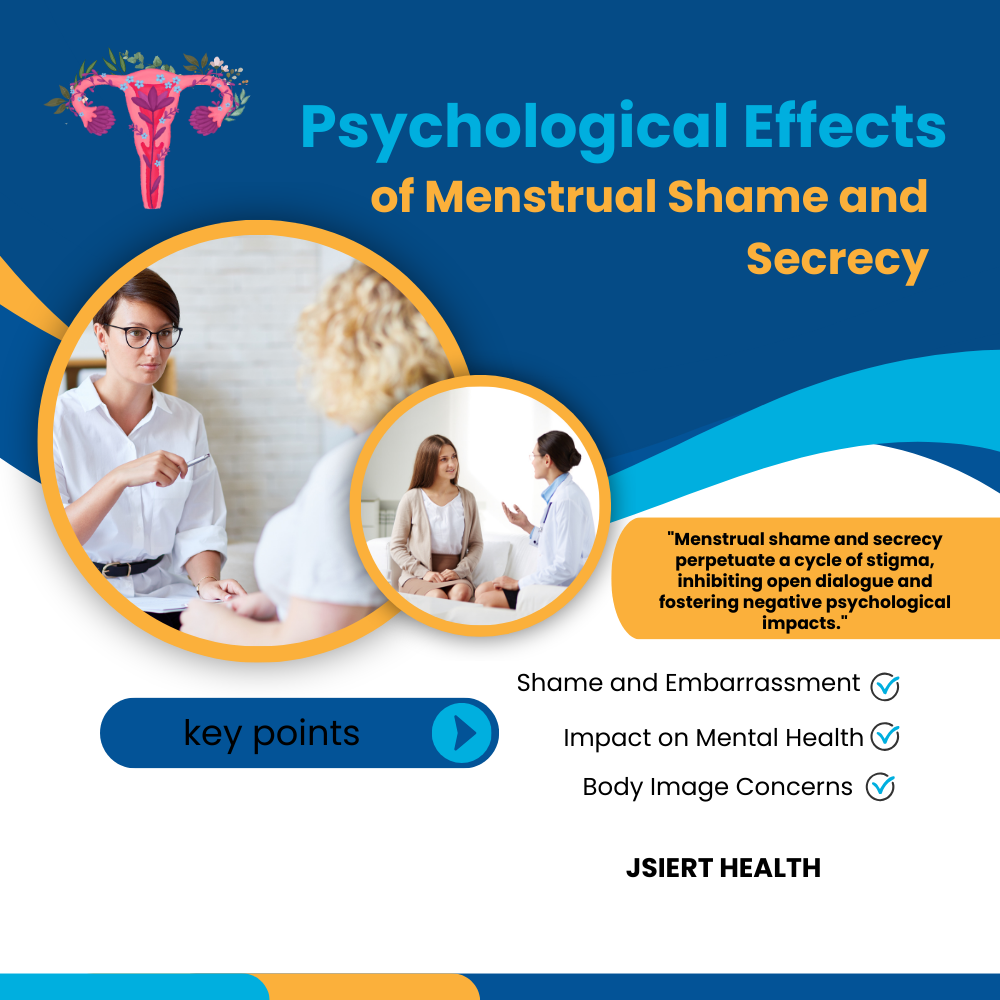
- Shame and Embarrassment: Menstrual stigma often leads to feelings of shame, embarrassment, and secrecy surrounding menstruation. Women and girls may internalize these negative perceptions, leading to low self-esteem and a reluctance to discuss menstrual health openly.
- Impact on Mental Health: The secrecy and stigma associated with menstruation can contribute to mental health issues such as anxiety, depression, and social isolation. Women and girls may experience distress and psychological discomfort during menstruation due to fear of judgment or ridicule.
- Body Image Concerns: Menstrual stigma can exacerbate existing body image concerns, as individuals may feel ashamed of their bodies’ natural functions. This can lead to distorted perceptions of self-image and contribute to negative body image and disordered eating behaviors.
Impact on Reproductive Health-Seeking Behaviors:
Menstrual stigma can also influence women’s attitudes and behaviors related to reproductive health care, including:
- Delayed Seeking of Care: Due to embarrassment or fear of judgment, women may delay seeking medical care for menstrual disorders or reproductive health concerns. This delay can lead to worsened health outcomes and complications.
- Underreporting of Symptoms: Women may underreport menstrual symptoms or reproductive health issues to healthcare providers due to stigma or societal norms. This can result in misdiagnosis or inadequate treatment of underlying conditions.
- Barriers to Accessing Care: Menstrual stigma can create barriers to accessing reproductive health services, particularly in settings where healthcare providers are not adequately trained to address menstrual health concerns sensitively and respectfully.
2.2 Economic and Social Impacts
Financial Burden of Menstrual Products:
Access to affordable menstrual products is essential for managing menstrual hygiene, yet many women and girls face financial barriers to obtaining these products. Key points to consider include:
- Cost of Menstrual Products: Menstrual products such as pads, tampons, and menstrual cups can be expensive, especially for low-income individuals and marginalized communities. The recurring cost of purchasing these products places a significant financial burden on women and their families.
- Impact on Household Budgets: The high cost of menstrual products can force women to make difficult choices between purchasing essential items like food and paying for menstrual hygiene products. This economic strain disproportionately affects marginalized groups, including women living in poverty and homeless individuals.
- Period Poverty: Period poverty refers to the inability to afford or access menstrual products, resulting in inadequate menstrual hygiene management. Period poverty can have far-reaching consequences, including compromised health, dignity, and participation in daily activities.
Missed Educational and Work Opportunities due to Menstruation-Related Issues:
Menstruation-related challenges can disrupt women’s education and employment opportunities, contributing to gender inequality and socioeconomic disparities. Key points to consider include:
- School Absenteeism: Girls may miss school during their menstrual periods due to lack of access to menstrual products, sanitation facilities, or pain management resources. This absenteeism can lead to academic underachievement and dropout rates among menstruating students.
- Workplace Productivity: Women may experience productivity loss or absenteeism in the workplace due to menstrual symptoms such as pain, fatigue, and discomfort. Menstruation-related issues can affect women’s ability to perform optimally at work, impacting their career advancement and economic stability.
- Stigma in Educational and Work Environments: Menstrual stigma in educational and work settings can create hostile or unsupportive environments for menstruating individuals. Discrimination or lack of accommodations for menstrual needs can exacerbate feelings of shame and discomfort, further hindering women’s educational and professional success.
By addressing menstrual stigma and its associated health, economic, and social impacts, we can create more inclusive and equitable societies where all individuals can manage their menstrual health with dignity and respect. Awareness, education, and advocacy are essential tools in dismantling the barriers to menstrual health and promoting gender equality worldwide.
Section 3: Education and Awareness Initiatives, focusing on comprehensive menstrual health education and community-based awareness programs.
3.1 Comprehensive Menstrual Health Education
Importance of Age-Appropriate Menstrual Education in Schools:

Comprehensive menstrual health education plays a crucial role in empowering girls with accurate information about menstruation and promoting positive attitudes towards menstrual health. Key points to consider include:
- Promoting Body Literacy: Menstrual health education helps young girls understand the biological processes involved in menstruation, including menstrual cycle phases, hormonal changes, and reproductive anatomy. This knowledge promotes body literacy and empowers girls to make informed decisions about their health.
- Normalizing Menstruation: Age-appropriate menstrual education in schools helps normalize menstruation as a natural and healthy bodily function. By destigmatizing menstruation and addressing common myths and misconceptions, educators can create supportive learning environments where girls feel comfortable discussing menstrual health.
- Encouraging Hygienic Practices: Menstrual education equips girls with essential knowledge about hygienic menstrual practices, including proper use of menstrual products, menstrual hygiene management, and strategies for maintaining reproductive health. This education fosters good menstrual hygiene habits and reduces the risk of menstrual-related infections and complications.
Addressing Myths and Misconceptions about Menstruation:
Menstrual health education helps dispel myths and misconceptions surrounding menstruation, fostering accurate understanding and promoting positive attitudes towards menstrual health. Key points to consider include:
- Challenging Taboos and Stigma: Menstrual education provides opportunities to challenge cultural taboos and stigma surrounding menstruation by promoting open and honest discussions about menstrual health. By addressing common misconceptions and misinformation, educators can reduce shame and embarrassment associated with menstruation.
- Correcting Misinformation: Many myths and misconceptions about menstruation persist due to lack of accurate information. Menstrual education provides a platform to correct misinformation and provide evidence-based facts about menstrual health, reproductive anatomy, and menstrual hygiene practices.
- Promoting Inclusivity: Menstrual education should be inclusive and sensitive to the diverse needs and experiences of all individuals, regardless of gender identity or expression. By promoting gender-inclusive language and representation, educators can ensure that all students feel seen, heard, and respected in discussions about menstruation.
3.2 Community-Based Awareness Programs
Role of NGOs, Community Organizations, and Advocacy Groups:
Community-based awareness programs play a vital role in promoting menstrual health and challenging menstrual stigma at the grassroots level. Key points to consider include:
- Providing Access to Resources: NGOs, community organizations, and advocacy groups play a crucial role in providing access to menstrual products, hygiene facilities, and reproductive health services for marginalized communities. These organizations work to address barriers to menstrual health and ensure that all individuals have the resources they need to manage their menstrual health with dignity.
- Advocating for Policy Change: Community-based organizations are often at the forefront of advocacy efforts to promote menstrual equity and influence policy change at the local, national, and international levels. By amplifying the voices of menstruators and advocating for their rights, these organizations work to dismantle systemic barriers to menstrual health and hygiene.
- Empowering Communities: Community-based awareness programs empower communities to take ownership of their menstrual health and advocate for change. By engaging community members in educational workshops, outreach events, and advocacy campaigns, these programs foster dialogue, raise awareness, and mobilize action to address menstrual stigma and promote menstrual health and hygiene.
Engaging Men and Boys in Menstrual Health Discussions:
Menstrual health is not just a women’s issue; it’s a societal issue that affects everyone. Engaging men and boys in menstrual health discussions is essential for challenging gender norms, promoting empathy, and fostering supportive environments where menstruators feel understood and supported. Key points to consider include:
- Breaking the Silence: Menstrual health discussions should involve men and boys to break the silence surrounding menstruation and challenge stereotypes and misconceptions. By promoting open dialogue and mutual understanding, these discussions help dismantle stigma and promote gender equality.
- Promoting Allyship: Men and boys can act as allies in promoting menstrual health by supporting menstruators, advocating for menstrual equity, and challenging harmful attitudes and behaviors. By fostering allyship and solidarity, men and boys can contribute to creating more inclusive and supportive communities where menstruators are valued and respected.
- Educating about Menstruation: Menstrual health education should include information for men and boys about menstruation, reproductive anatomy, and the experiences of menstruators. By educating men and boys about menstruation, educators can promote empathy, understanding, and respectful behavior towards menstruating individuals.
In conclusion, comprehensive menstrual health education and community-based awareness programs are essential for promoting positive attitudes towards menstruation, challenging menstrual stigma, and fostering supportive environments where all individuals can manage their menstrual health with dignity and respect. By addressing myths and misconceptions, providing access to resources, and engaging men and boys as allies, we can create more inclusive and equitable societies where menstruators can thrive.
Section 4: Hygiene Practices and Access to Resources, covering the importance of hygienic menstrual practices and sustainable solutions for menstrual hygiene management.
4.1 Importance of Hygienic Menstrual Practices
Risks of Poor Menstrual Hygiene on Women’s Health:
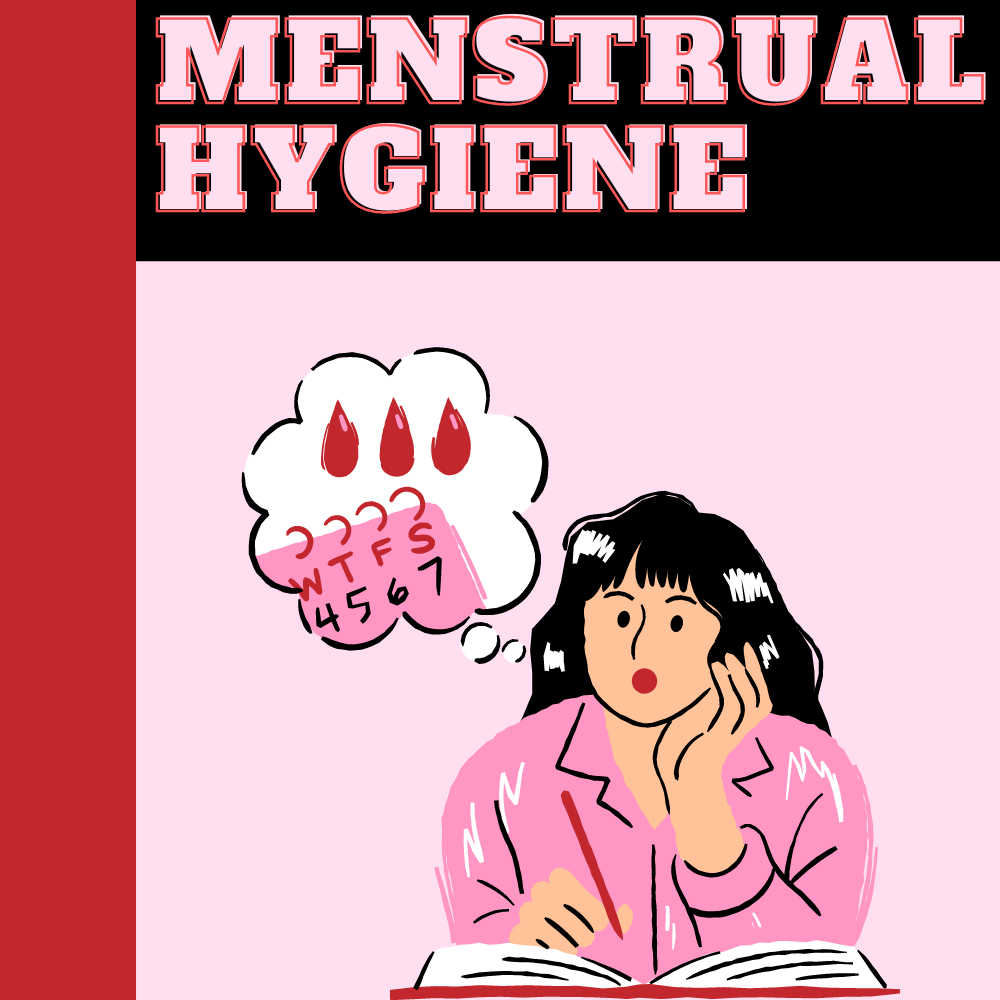
Maintaining hygienic menstrual practices is essential for preventing infections and promoting overall health and well-being. Key points to consider include:
- Increased Risk of Infections: Poor menstrual hygiene, such as inadequate washing or reuse of unclean menstrual products, can increase the risk of vaginal and urinary tract infections. Bacteria thrive in moist environments, making proper hygiene crucial for preventing infections.
- Reproductive Health Complications: Chronic infections resulting from poor menstrual hygiene can lead to more severe reproductive health complications, including pelvic inflammatory disease (PID), endometritis, and infertility. These conditions can have long-term implications for women’s health and fertility.
- Impact on Maternal and Child Health: Pregnant women with untreated infections resulting from poor menstrual hygiene are at increased risk of complications during pregnancy and childbirth, including preterm birth and low birth weight. Ensuring hygienic menstrual practices is essential for promoting maternal and child health outcomes.
Promoting Access to Clean Water, Sanitation Facilities, and Menstrual Products:
Access to clean water, sanitation facilities, and menstrual products is essential for maintaining hygienic menstrual practices. Key points to consider include:
- Access to Clean Water: Clean water is essential for washing the body, menstrual products, and reusable menstrual hygiene items. In many parts of the world, lack of access to clean water hinders women’s ability to practice proper menstrual hygiene, increasing their risk of infections and health complications.
- Sanitation Facilities: Access to private and hygienic sanitation facilities, including toilets with adequate water and disposal facilities, is crucial for managing menstrual hygiene safely and discreetly. Without access to appropriate sanitation facilities, women may resort to unsafe or unhygienic practices, compromising their health and dignity.
- Menstrual Products: Access to affordable and culturally appropriate menstrual products, such as pads, tampons, menstrual cups, and reusable cloth pads, is essential for managing menstrual hygiene effectively. Lack of access to menstrual products can force women to resort to unsafe alternatives or miss out on essential activities during menstruation.
4.2 Sustainable Solutions for Menstrual Hygiene Management
Advocating for Eco-Friendly Menstrual Products:
Promoting eco-friendly menstrual products helps reduce environmental impact and promote sustainable menstrual hygiene management. Key points to consider include:
- Reusable Menstrual Products: Reusable menstrual products, such as menstrual cups and cloth pads, offer a sustainable alternative to disposable menstrual products. These products are cost-effective, environmentally friendly, and can be reused for several years with proper care.
- Biodegradable Options: Advocating for biodegradable menstrual products, such as organic cotton pads and tampons, helps reduce the environmental burden of menstrual waste. Biodegradable products break down naturally over time, minimizing pollution and environmental degradation.
- Promoting Innovation: Supporting innovation in menstrual product design and manufacturing can lead to the development of more sustainable options for menstrual hygiene management. From compostable packaging to innovative materials, there are various ways to reduce the environmental footprint of menstrual products.
Innovative Approaches to Menstrual Waste Management:
Effective menstrual waste management is essential for reducing environmental pollution and promoting sustainable menstruation. Key points to consider include:
- Safe Disposal Practices: Educating women and girls about safe disposal practices for menstrual waste, such as wrapping used products in biodegradable materials and disposing of them in designated waste bins, helps minimize environmental contamination.
- Community-Led Initiatives: Engaging communities in menstrual waste management initiatives, such as community clean-up drives and recycling programs, promotes collective responsibility for managing menstrual waste sustainably. Community-led approaches empower individuals to take ownership of their environmental impact and promote positive behavioral change.
- Partnerships and Collaboration: Collaboration between government agencies, non-profit organizations, and private sector stakeholders is essential for developing comprehensive menstrual waste management strategies. By leveraging resources, expertise, and networks, stakeholders can work together to address menstrual waste challenges effectively and promote sustainable solutions.
In conclusion, prioritizing hygienic menstrual practices and promoting access to clean water, sanitation facilities, and menstrual products are essential for ensuring women’s health and well-being. By advocating for eco-friendly menstrual products and innovative approaches to menstrual waste management, we can reduce the environmental impact of menstruation and promote sustainable menstruation for future generations.
Section 5: Policy and Advocacy Efforts and Section 6: Empowering Women and Girls, covering the importance of government policies, advocacy for menstrual equity, and initiatives to empower women and girls.
5.1 Policy and Advocacy Efforts
Importance of Government Policies Supporting Menstrual Health:
Government policies play a crucial role in shaping the landscape of menstrual health and hygiene. Key points to consider include:
- Addressing Menstrual Health as a Public Health Priority: Government policies that prioritize menstrual health as a public health issue help raise awareness, allocate resources, and develop programs to address menstrual hygiene management effectively. By recognizing the importance of menstrual health, governments can promote positive health outcomes and reduce inequalities related to menstruation.
- Ensuring Access to Menstrual Products: Government policies should ensure equitable access to affordable and quality menstrual products for all individuals, regardless of socio-economic status. This may include measures such as subsidizing menstrual products, providing free distribution in schools and public spaces, and removing taxes on menstrual products to make them more accessible.
- Improving Menstrual Hygiene Facilities: Government policies should prioritize the provision of clean water, sanitation facilities, and hygiene infrastructure in schools, workplaces, healthcare facilities, and public spaces. Access to private and hygienic sanitation facilities is essential for managing menstrual hygiene safely and with dignity.
Advocacy for Menstrual Equity and Access to Essential Resources:
Advocacy efforts are essential for promoting menstrual equity and ensuring access to essential menstrual resources. Key points to consider include:
- Challenging Stigma and Taboos: Advocacy efforts should work to challenge menstrual stigma, dispel myths and misconceptions, and promote positive attitudes towards menstruation. By raising awareness and advocating for cultural change, advocates can create supportive environments where menstruation is normalized and respected.
- Addressing Policy Gaps: Advocates can push for policy reforms and legislative changes to address gaps in menstrual health and hygiene management. This may include advocating for laws that mandate menstrual health education in schools, provide funding for menstrual product distribution programs, and protect the rights of menstruating individuals.
- Promoting Menstrual Equity: Menstrual equity refers to ensuring that all individuals have access to the menstrual products, facilities, and information they need to manage their menstrual health with dignity and respect. Advocates can work to promote menstrual equity by advocating for policies that address affordability, accessibility, and inclusivity in menstrual health services and resources.
5.2 Empowering Women and Girls
Promoting Self-Care and Body Positivity:
Empowering women and girls to embrace their bodies and prioritize self-care is essential for promoting menstrual health and well-being. Key points to consider include:
- Education and Awareness: Providing education and resources on menstrual health, body literacy, and self-care practices empowers women and girls to make informed decisions about their bodies and menstrual health. By promoting body positivity and self-acceptance, individuals can develop a positive relationship with their bodies and menstrual cycles.
- Self-Care Practices: Encouraging self-care practices, such as adequate rest, stress management, healthy nutrition, and exercise, can help alleviate menstrual symptoms and promote overall well-being. By prioritizing self-care during menstruation, women and girls can better manage their menstrual health and enhance their quality of life.
Fostering a Culture of Openness and Support Around Menstruation:
Creating a culture of openness and support around menstruation is essential for breaking the silence and stigma surrounding this natural bodily function. Key points to consider include:
- Promoting Dialogue: Encouraging open and honest discussions about menstruation in families, schools, workplaces, and communities helps normalize menstruation and challenge stigma. By fostering dialogue and sharing experiences, individuals can create supportive environments where menstruation is celebrated and respected.
- Building Support Networks: Creating support networks and peer groups for menstruating individuals provides a space for sharing experiences, seeking advice, and accessing support. Supportive communities can help individuals feel validated, understood, and empowered to manage their menstrual health with confidence and dignity.
In conclusion, policy and advocacy efforts are essential for promoting menstrual health and hygiene, advocating for menstrual equity, and empowering women and girls to prioritize self-care and body positivity. By addressing policy gaps, challenging stigma, and fostering supportive environments, we can create a world where menstruation is celebrated as a natural and normal part of life, and all individuals have access to the resources they need to manage their menstrual health with dignity and respect.
Conclusion:
Menstrual health awareness is not merely a matter of biology; it is a fundamental issue of gender equity, human rights, and public health. By prioritizing education, awareness, and hygiene practices, we can break the silence surrounding menstruation, empower women and girls, and promote a more inclusive and supportive society for all. This essay serves as a call to action for individuals, communities, and policymakers to work together towards achieving menstrual health equity and dignity for every woman and girl worldwide.
REFERENCES:
To explore menstrual health education, awareness, and hygiene practices, you can refer to a variety of reputable sources, including:
- International Organizations and NGOs:
- United Nations Population Fund (UNFPA) – https://www.unfpa.org/
- World Health Organization (WHO) – https://www.who.int/
- UNICEF – https://www.unicef.org/
- Government Health Agencies:
- Centers for Disease Control and Prevention (CDC) – https://www.cdc.gov/
- National Health Service (NHS) UK – https://www.nhs.uk/
- Indian Ministry of Health and Family Welfare – https://www.mohfw.gov.in/
- Nonprofit Organizations and Charities:
- Plan International – https://plan-international.org/
- Menstrual Health Hub – https://www.menstrualhealthhub.org/
- Days for Girls International – https://www.daysforgirls.org/
- Websites and Online Resources:
- Healthline – https://www.healthline.com/
- Mayo Clinic – https://www.mayoclinic.org/
- Period. – https://www.period.org/
- Books and Reports:
- “Period Power: A Manifesto for the Menstrual Movement” by Nadya Okamoto.
- “Periods Gone Public: Taking a Stand for Menstrual Equity” by Jennifer Weiss-Wolf.
- “Menstruation and Menstrual Hygiene Management Among Adolescent Girls in India: A Systematic Review and Meta-analysis” – A research article by Venkatesan Chakrapani et al., published in the Journal of Adolescent Health.
- Educational Materials and Toolkits:
- Menstrual Hygiene Day Resources – https://menstrualhygieneday.org/resources/
- Menstrual Health Alliance India – https://menstrualhealthallianceindia.org/resources/
- UNICEF Menstrual Health and Hygiene Toolkit – https://www.unicef.org/india/reports/menstrual-hygiene-management-toolkit
- Scientific Research and Journals:
- Journal of Adolescent Health
- The Lancet Global Health
- BMC Women’s Health
These resources provide valuable information on menstrual health education, awareness campaigns, hygiene practices, and policies aimed at promoting menstrual equity and breaking the stigma surrounding menstruation. They offer a wealth of resources for individuals, educators, policymakers, and healthcare providers interested in supporting menstrual health and well-being.
Some frequently asked questions (FAQs) for Menstrual Health Awareness: Education, Awareness, and Hygiene Practices:
- What is menstrual health awareness, and why is it important?
- Menstrual health awareness encompasses education, awareness, and hygiene practices related to menstruation. It is important because it helps break the silence and stigma surrounding menstruation, promotes positive attitudes towards menstrual health, and ensures that individuals have access to essential resources and information to manage their menstrual health with dignity and respect.
- What is included in menstrual health education?
- Menstrual health education covers various topics, including the biological aspects of menstruation, menstrual cycle phases, hormonal changes, common menstrual disorders, hygienic menstrual practices, and myths and misconceptions about menstruation. It aims to provide individuals with accurate information about menstruation and promote positive attitudes towards menstrual health.
- How can I address menstrual stigma and misconceptions?
- You can address menstrual stigma and misconceptions by promoting open and honest discussions about menstruation, challenging stereotypes and cultural taboos, and providing accurate information about menstrual health. Education, awareness-raising campaigns, and advocacy efforts are essential for challenging menstrual stigma and promoting menstrual equity.
- What are some hygienic menstrual practices?
- Hygienic menstrual practices include using clean and hygienic menstrual products, changing them regularly, practicing proper genital hygiene, washing hands before and after handling menstrual products, and disposing of menstrual waste properly. Access to clean water, sanitation facilities, and menstrual products is essential for maintaining hygienic menstrual practices.
- How can I advocate for menstrual equity and access to essential resources?
- You can advocate for menstrual equity and access to essential resources by raising awareness about menstrual health issues, lobbying policymakers to implement menstrual-friendly policies, supporting community-based initiatives that provide menstrual products and education, and challenging discriminatory practices that hinder access to menstrual resources.
- What are sustainable menstrual hygiene management solutions?
- Sustainable menstrual hygiene management solutions include promoting eco-friendly menstrual products such as menstrual cups and reusable cloth pads, advocating for innovative approaches to menstrual waste management, and supporting initiatives that promote menstrual equity and environmental sustainability.
- How can I empower women and girls to prioritize menstrual health and hygiene?
- You can empower women and girls to prioritize menstrual health and hygiene by promoting self-care practices, fostering a culture of openness and support around menstruation, providing education and resources on menstrual health, and advocating for policies that address menstrual equity and access to essential resources.
- Where can I find reliable information about menstrual health and hygiene?
- Reliable sources of information about menstrual health and hygiene include reputable organizations such as the World Health Organization (WHO), UNICEF, national health departments, and non-profit organizations specializing in reproductive health and menstrual hygiene management. Additionally, educational materials and resources from trusted healthcare providers and academic institutions can provide accurate information about menstruation.